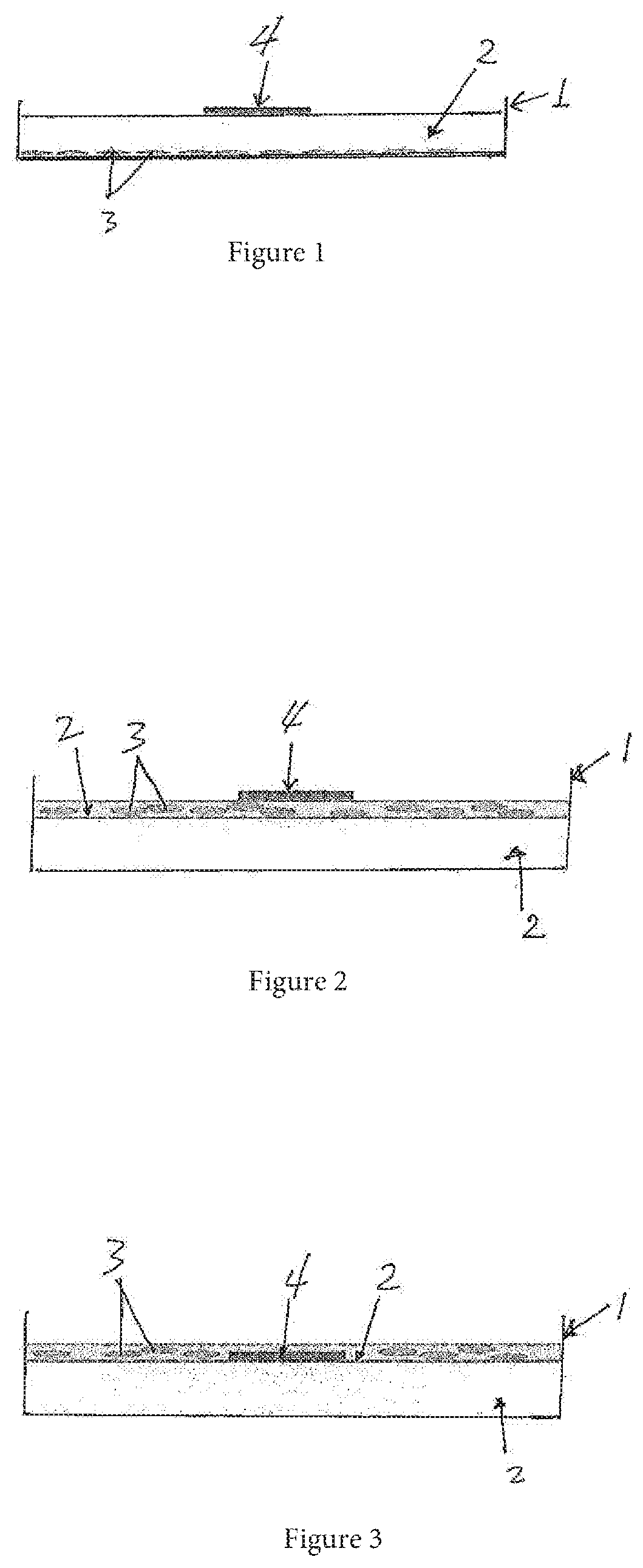Cytotoxicity test method for medical device
a cytotoxic test and medical device technology, applied in the field of cytotoxic test methods for medical devices, can solve the problems of inability to fully expose cells to test substances, inability to perform vitro cytotoxic tests, and inability to diffuse cytotoxic leachates
- Summary
- Abstract
- Description
- Claims
- Application Information
AI Technical Summary
Benefits of technology
Problems solved by technology
Method used
Image
Examples
example 1
[0056]Direct Contact.
[0057]L929 Cells were seeded (2 mL / Well) at 1×105 Cells / mL, Incubated for 48 Hours (at 37° C.) and then medium was replaced with 0.8 mL of 1×MEM05FBS. Wako disc and reference material C were the negative controls; and latex, reference material A, and B were the positive controls. The paper filter discs (20 μL of either 100% ethanol or 2000 ppm (0.2%) Benzalkonium Chloride (BAK)) were also evaluated. At the end of the 24-hour incubation, all materials and medium were removed and cells were stained with 0.1% Trypan blue (Sigma-Aldrich, St. Louis, Mo.), examined by phase contrast microscopy, and the potential cytotoxicity of each test material is graded according to ISO / USP guidelines (USP, 2017).
[0058]Positive (reference materials A, B, and latex) and negative controls (Wako disc and reference material C) were used in this study. All the positive controls are cytotoxic and negative controls are non-cytotoxic (Table 2). Both Wako disc and reference material C had s...
example 2
gar Overlay
[0059]L929 cells were prepared as described in the direct contact method except that medium was replace with 2 mL of agar overlay medium (1×MEMAO) after 48 hours incubation (at 37° C.). All the positive, negative, and paper filter discs (100 μL of either 100% Ethanol or 2000 ppm (0.2%) BAK) were placed on top of the solidified agarose surface in each well. After 24 hours of incubation, cells were examined macroscopically to observe cell decolorization around the test materials for the determination cell lysis zone. After macroscopic examination, cells were examined microscopically to verify any decolorized zones and to determine cell morphology in proximity to the article.
[0060]Results with both reference materials A and B had lower reactivity as compared to the direct contact method (Tables 2 and 3). In contrast to direct contact method, Wako disc and reference material C had no reactivity in the agar overlay method because of the protection of the agar layer. The lack o...
example 3
[0061]Modified and Embedded Modified Agar Overlay.
[0062]1×MEMAOM was used as the nutrient supplement agar at 2 mL / well.
[0063]A) Two layer modified agar overlay. After the nutrient agar solidified, L929 cells (5.4×106 cells / mL) were mixed with 0.33% neutral red at a 1:32 ratio (v / v) and 1×MEMAOM at 1:2 ratio (v / v) to make 0.01% neutral red and 1.8×106 cells / mL cell agar mixture. Then, 600 μL of this cell agar mixture was added on top of the base agar with a final cell concentration of 1.0×106 cells / well. Test materials were loaded as described in the ISO / USP agar overlay method.
[0064]B) Two layer embedded modified agar overlay. The test materials were added after the base nutrient agar solidified, and 2.0 mL of L929 (1.8×106 cells / mL) cell agar mixture described above was added on top of the test materials to fully cover the test materials with a final cell concentration of 3.6×106 cells / well. After 24 hours of incubation, cells were examined as described in ISO / USP agar overlay meth...
PUM
 Login to View More
Login to View More Abstract
Description
Claims
Application Information
 Login to View More
Login to View More - R&D
- Intellectual Property
- Life Sciences
- Materials
- Tech Scout
- Unparalleled Data Quality
- Higher Quality Content
- 60% Fewer Hallucinations
Browse by: Latest US Patents, China's latest patents, Technical Efficacy Thesaurus, Application Domain, Technology Topic, Popular Technical Reports.
© 2025 PatSnap. All rights reserved.Legal|Privacy policy|Modern Slavery Act Transparency Statement|Sitemap|About US| Contact US: help@patsnap.com

